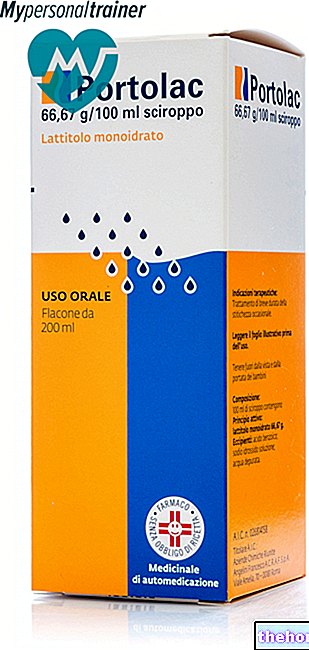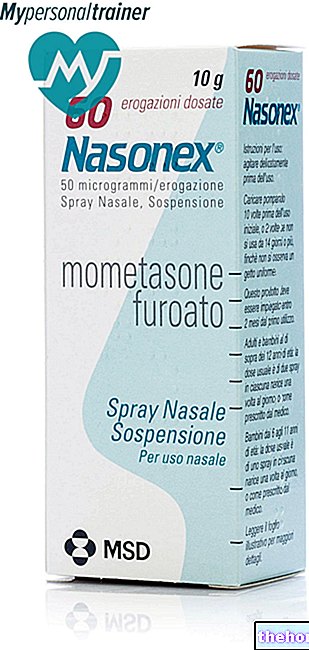Active ingredients: Lactitol
Portolac 5 g powder for oral solution
Portolac 10 g powder for oral solution
Portolac 200 g powder for oral solution
Portolac package inserts are available for pack sizes: - Portolac 5 g powder for oral solution, Portolac 10 g powder for oral solution, Portolac 200 g powder for oral solution
- Portolac 66.67 g / 100 ml syrup
Indications Why is Portolac used? What is it for?
Portolac contains the active substance lactitol monohydrate, which belongs to a group of medicines called osmotic laxatives. This medicine works by increasing the water content in the intestine, thus promoting the evacuation of soft, bulky stools.
Portolac is indicated in adults and children for the short-term treatment of occasional constipation.
Talk to your doctor if you or the child feel no better or feel worse after 7 days of treatment.
Contraindications When Portolac should not be used
Do not take / give your child Portolac
- if you or the child are allergic to lactitol monohydrate or any of the other ingredients of this medicine (listed in section 6)
- if you or the child suffer from reduced intestinal transit (for example blockage of the bowel due to an obstruction)
- if you or the child have or may have a bowel injury
- if you or the baby have any tummy pain you don't know why
- if you or the child have blood loss from the rectum
- if you or your child suffer from water and electrolyte imbalance (alteration in the concentrations of liquids and salts in the body);
- if you or the child have an intolerance to galactose (a type of sugar).
Do not give Portolac to breastfed babies and babies with fructose intolerance (another type of sugar).
If you or your child have fecal impaction (a hard, bulky clump of stools in the bowel caused by constipation), this condition should be treated in another way before using laxatives.
Precautions for use What you need to know before taking Portolac
Talk to your doctor or pharmacist before taking / giving Portolac to your child. The treatment of chronic or recurrent constipation always requires the intervention of the physician for the diagnosis, the prescription of the drugs and the surveillance during the therapy.
Consult your doctor:
- when the constipation that you or the child suffers from is chronic or particularly stubborn. In this case, your doctor will advise you to treat constipation first with a diet rich in fiber, sufficient fluid intake or physical activity;
- if you are to undergo electrocautery procedures (a medical procedure used to remove parts of tissue) of the intestine;
- if you get nausea or bloating (air in your belly);
- if you, or the child, have undergone an ileostomy or colostomy (surgical techniques that allow an opening in the belly that allows the stool to be eliminated from the outside)
- if your doctor has diagnosed you or your child with intolerance to some sugars;
- when the need for the laxative derives from a sudden change in previous bowel habits (frequency and characteristics of bowel movements) that has lasted for more than two weeks or when the use of the laxative fails to produce effects;
- if you are elderly and / or debilitated, as your doctor may wish to regularly check the levels of salts in your blood.
It is important to treat any water-electrolyte imbalance (alteration of the concentrations of liquids and salts present in the body) before starting treatment with a laxative.
Abuse of laxatives
If you or your child abuse (frequent or prolonged use or with excessive doses) of laxatives:
- may experience persistent diarrhea with consequent loss of water, mineral salts (especially potassium) and other essential nutritional factors;
- in severe cases you may experience severe loss of water from your body (dehydration) or a decrease in potassium in your blood. You may therefore have heart or muscle problems, especially if you are also taking medicines such as cardiac glycosides, diuretics or corticosteroids, to treat heart disease or inflammation;
- it can develop dependence (and, therefore, possible need to gradually increase the dosage), chronic constipation and loss of normal bowel functions (intestinal atony).
For these reasons, prolonged use of laxatives without interruption should be avoided and the physician should try to determine the optimal dosage at the start of treatment.
Children
In children and infants the medicine can only be used after consulting your doctor.
Interactions Which drugs or foods may change the effect of Portolac
Other medicines and Portolac
Tell your doctor or pharmacist if you / your child are taking, have recently taken or might take any other medicines.
Laxatives can reduce the time spent in the intestine, and therefore the absorption, of other medicines taken by mouth at the same time.
Avoid ingesting / making the child swallow laxatives and other drugs at the same time: after taking / giving the child a medicine, leave an interval of at least 2 hours before taking / giving the child the laxative.
Tell your doctor if you or your child are taking:
- neomycin (medicine used to treat infections) and antacids (to treat stomach acid). In particular, these medicines should not be taken with Portolac in case of severe liver disease (cirrhosis with hepatic encephalopathy);
- cardioglycosides (medicines used to treat heart disease), as they may increase the toxic effects of these medicines;
- antibacterial agents (medicines used to treat infections) and oral antacids, as they reduce the effect of Portolac on the bacterial flora of the intestine;
- medicines which when taken together with Portolac increase the loss of potassium, for example: thiazo-diuretics (medicines which cause an increase in the production of urine); corticosteroids (anti-inflammatory); carbenoxolone (medicine used to treat ulcers); amphotericin B (medicines used against fungal infections).
Portolac with food and drink
If you feel nauseous, take Portolac with a meal.
Warnings It is important to know that:
Pregnancy and breastfeeding
If you are pregnant or breast-feeding, think you may be pregnant or are planning to have a baby, ask your doctor or pharmacist for advice before taking this medicine.
Pregnancy
In the first 3 months of pregnancy, take Portolac only when clearly needed and under the supervision of your doctor.
Feeding time
If you are breast-feeding, consult your doctor before taking Portolac.
Driving and using machines
Portolac does not affect the ability to drive or use machines.
Health education notes
In most cases, a balanced diet rich in water and fiber (bran, vegetables and fruit) can solve the problem of constipation.
Many people think they suffer from constipation if they fail to evacuate every day. This is a misconception as this is a completely normal situation for a large number of individuals. Consider, instead, that constipation occurs when the bowel movements are reduced compared to one's personal habits and are associated with the emission of hard stools.
If episodes of constipation occur repeatedly, the doctor should be consulted.
Dose, Method and Time of Administration How to use Portolac: Posology
Always take / give your child this medicine exactly as described in this leaflet or as instructed by your doctor or pharmacist. If in doubt, consult your doctor or pharmacist.
Adults
The recommended dose is 10-15 g of Portolac per day, equivalent to 2-3 scoops of 5g powder for oral solution or 2-3 sachets of 5g or 1 sachet of 10g.
Take Portolac preferably in the evening, before going to bed, in a single dose. If you feel nauseous, it is advisable to take Portolac with meals.
Use in children
Children- from 2 to 6 years: 5 g per day equal to 1 scoop of 5 g of powder for oral solution or to a 5 g sachet.
- over 6 years: 5-10 g per day, equal to 1-2 scoops of 5 g powder for oral solution, 1-2 sachets of 5 g or 1 sachet of 10 g.
Give your child Portolac as a single dose in the morning with breakfast.
Infants
On average 1-2 g per day, equivalent to 1-2 scoops of 1 g of powder for oral solution.
In general, the optimal effect can be achieved with dose adjustments of 5 g per day (more or less) in adults and 1 g per day in children.
The correct dose is the minimum sufficient to produce an easy evacuation of soft stools. Use / give the child the minimum prescribed doses initially. When necessary, the dose can then be increased, but without ever exceeding the maximum indicated.
Dissolve the powder in water or other drinks (milk, tea, coffee, fruit juices) or add it to other foods such as: yogurt, cooked fruit, etc.
Swallow / give your child Portolac together with an adequate amount of water (one large glass). A diet rich in liquids promotes the effect of the medicine.
Take / give your child laxatives as infrequently as possible and for no longer than 7 days. The use for longer periods of time requires a doctor's prescription after adequate evaluation of the individual case.
Avoid prolonged use of laxatives without interruption.
Overdose What to do if you have taken too much Portolac
If you take / give your child more Portolac than they should
In case of accidental ingestion / intake of an excessive dose of Portolac, notify your doctor immediately or go to the nearest hospital.
If you accidentally ingest / take an overdose, you or your child may have belly pains and diarrhea. In these cases, treatment should be stopped, take fluids and consult a doctor.
See also the information in the section "Warnings and Precautions" about the abuse of laxatives.
If you forget to take / give your child Portolac
Do not take / give your child a double dose to make up for a forgotten dose.
If you have any further questions on the use of this medicine, ask your doctor or pharmacist.
Side Effects What are the side effects of Portolac
Like all medicines, this medicine can cause side effects, although not everybody gets them.
At the beginning of the treatment, Portolac can cause abdominal discomfort, mainly with gas emissions from the intestine, and rarely belly pain or sometimes belly swelling. These effects tend to diminish or disappear after a few days of regular Portolac intake.
The following side effects may occur at the following frequency:
Rare (may affect up to 1 in 1,000 people)
- He retched
- diarrhea
- belly pain
- swelling of the belly
- production of gas from the intestine (flatulence).
Very rare (may affect up to 1 in 10,000 people)
- nausea
- abnormal sounds from the stomach and intestines
- anal itching.
Reporting of side effects
If you or the child get any side effects, talk to your doctor or pharmacist. This includes any possible side effects not listed in this leaflet. You can also report side effects directly via the national reporting system at: www.agenziafarmaco.gov.it/it/responsabili.
By reporting side effects you can help provide more information on the safety of this medicine.
Expiry and Retention
Keep this medicine out of the sight and reach of children.
Do not use this medicine after the expiry date which is stated on the bottle after EXP. The expiry date refers to the last day of that month.
Portolac 5 g and 10 g powder for oral solution: Store in the original package to protect from moisture.
Portolac 200 g powder for oral solution: do not store above 25 ° C. Store in the original package to protect the medicine from moisture.
Do not throw any medicines via wastewater or household waste. Ask your pharmacist how to throw away medicines you no longer use. This will help protect the environment.
Composition and pharmaceutical form
What Portolac contains
Portolac 5g or 10g powder for oral solution
- the active ingredient is: lactitol monohydrate (each sachet contains 5 g or 10 g of lactitol monohydrate).
Portolac 200 g powder for oral solution
- the active ingredient is: lactitol monohydrate (each jar contains 200 g of lactitol monohydrate).
There are no other components.
Description of what Portolac looks like and contents of the pack
Portolac is a powder for oral solution, available in box of 10 sachets of 5 g or box of 20 sachets of 10 g or jar of 200 g with measuring cup.
Not all pack sizes may be marketed.
Source Package Leaflet: AIFA (Italian Medicines Agency). Content published in January 2016. The information present may not be up-to-date.
To have access to the most up-to-date version, it is advisable to access the AIFA (Italian Medicines Agency) website. Disclaimer and useful information.
01.0 NAME OF THE MEDICINAL PRODUCT
PORTOLAC
02.0 QUALITATIVE AND QUANTITATIVE COMPOSITION
Portolac 200 g powder for oral solution
Each jar contains 200 g of lactitol monohydrate.
Portolac 5 g powder for oral solution
Each sachet contains 5 g of lactitol monohydrate.
Portolac 10 g powder for oral solution
Each sachet contains 10 g of lactitol monohydrate.
Portolac 66.67 g / 100 ml syrup
100 ml of syrup contains 66.7 g of lactitol monohydrate
For the full list of excipients see section 6.1.
03.0 PHARMACEUTICAL FORM
Powder for oral solution: white, odorless powder.
Syrup: clear, colorless and odorless solution.
04.0 CLINICAL INFORMATION
04.1 Therapeutic indications
Portolac is indicated for the short-term treatment of occasional constipation.
04.2 Posology and method of administration
Adults
Powder for oral solution: 10-15 g of Portolac per day, equal to 2-3 scoops of 5 g powder for oral solution, 2-3 sachets of 5 g or 1 sachet of 10 g, in a single administration, preferably in the evening before bedtime.
Syrup: 15-30 ml of PORTOLAC syrup per day (corresponding to 1-2 measuring spoons filled up to the 15 ml mark) in a single administration, preferably in the evening before going to bed.
Pediatric population
Children
Powder for oral solution
Portolac should be taken in a single dose, in the morning with breakfast: from 2 to 6 years, 5 g per day, equal to a 5 g measuring spoon of powder for oral solution or a 5 g sachet; over 6 years, 5-10 g per day, equal to 1-2 scoops of 5 g of powder for oral solution, 1-2 sachets of 5 g or 1 sachet of 10 g.
Syrup
Portolac syrup should be taken in a single dose, in the morning with breakfast: from 2 to 6 years, 10 ml per day (equal to 1 measuring cup filled up to the 10 ml mark); over 6 years, 10-15 ml per day (equal to 1 measuring cup filled up to the 10 ml or 15 ml mark).
Infants
Dust by solution oral
On average 1-2 g per day, equivalent to 1-2 scoops of 1 g of powder for oral solution.
Syrup
On average 5 ml of syrup per day (equal to 1 measuring cup filled up to the 5 ml mark).
In general, the optimal clinical response can be achieved with dosage adjustments of 5 g of powder for oral solution per day (more or less) in the adult (equal to 1 scoop of syrup filled up to the 7.5 ml mark. ) and 1 g of powder for oral solution per day in children.
Portolac in the powder form for oral solution should be dissolved in water or other drinks (milk, tea ", coffee, fruit juices) or added to other foods such as yogurt, cooked fruit, etc.
The correct dose is the minimum sufficient to produce an easy evacuation of soft stools. It is advisable to initially use the minimum doses provided. When necessary, the dose can then be increased, but without ever exceeding the maximum indicated.
Laxatives should be used as infrequently as possible and for no more than seven days. The use for longer periods of time requires a doctor's prescription after adequate evaluation of the individual case.
Swallow with an adequate amount of water (a large glass).
A diet rich in liquids promotes the effect of the medicine.
04.3 Contraindications
Hypersensitivity to lactitol or to any of the excipients listed in section 6.1.
Portolac produces its effect in the colon and is therefore contraindicated in all cases where intestinal transit is not ensured (intestinal obstruction, etc.). As with all laxatives, Portolac should not be used in case of any symptom or suspicion of organic lesion of the digestive tract and in case of any abdominal pain of unknown origin or rectal bleeding. Fecaloma must be treated in another way before using laxatives.
Breast-fed infants and infants with autosomal recessive hereditary fructose intolerance.
Portolac is contraindicated in galactosemia.
Incomplete metabolism of lactitol can lead to the development of fructosemia and galactosemia and their sequelae.
Pre-existing water-electrolyte imbalance.
04.4 Special warnings and appropriate precautions for use
- Avoid prolonged use of laxatives without interruption;
- All cases of chronic constipation must first be treated with a diet rich in fiber, sufficient fluid intake or physical activity;
- To avoid disturbances in the electrolyte balance caused by overdose diarrhea, the physician should try to determine the optimal dosage at the start of treatment (see section 4.2 "Posology and method of administration") to obtain one" evacuation per day in patients with constipation.
Elderly or debilitated patients on long-term treatment with Portolac should regularly monitor their serum electrolytes.
As with all laxatives, a pre-existing water-electrolyte imbalance must be corrected before starting treatment.
Following treatment with Portolac, hydrogen can accumulate in the intestine. Patients who need to undergo electrocautery procedures should therefore perform a thorough intestinal cleansing with non-fermentable solution.
- Patients complaining of nausea should be advised to take Portolac with meals.
- Portolac is not recommended for ileostomy or colostomy. In case of particularly stubborn constipation, you should consult your doctor.
Pediatric population
Infants and children: Portolac should only be used if recommended by a doctor.
Patients with rare hereditary problems of fructose intolerance, galactose intolerance, galactosemia, or glucose-galactose malabsorption should not take this medicine.
In the presence of intestinal meteorism, start treatment with the minimum doses indicated, then gradually increasing them according to the effect obtained.
Portolac has no cariogenic power.
The abuse of laxatives (frequent or prolonged use or with excessive doses) can cause persistent diarrhea with consequent loss of water, mineral salts (especially potassium) and other essential nutritional factors.
In severe cases, the onset of dehydration or hypokalaemia is possible, which can cause cardiac or neuromuscular dysfunction, especially in the case of simultaneous treatment with cardiac glycosides, diuretics or corticosteroids.
The abuse of laxatives, especially contact laxatives (stimulant laxatives), can cause addiction (and, therefore, the possible need to gradually increase the dosage), chronic constipation and loss of normal intestinal functions (intestinal atony).
The treatment of chronic or recurrent constipation always requires the intervention of the physician for the diagnosis, the prescription of the drugs and the surveillance during the therapy.
Consult your doctor when the need for the laxative derives from a sudden change in previous bowel habits (frequency and characteristics of bowel movements) lasting more than two weeks or when the use of the laxative fails to produce effects.
It is also advisable for elderly people or those in poor health to consult their doctor before using the medicine.
04.5 Interactions with other medicinal products and other forms of interaction
Since antacids and neomycin can neutralize the acidifying effect of lactitol on faeces, they should not be administered concomitantly with lactitol in cirrhotic patients with hepatic encephalopathy; however, both substances do not alter the laxative effect in patients with constipation.
Like all laxatives, Portolac can increase potassium loss caused by other drugs (e.g. thiazo-diuretics, corticosteroids, carboxolone, amphotericin B).
Potassium deficiency may increase the risk of toxic effects of cardioglycosides in patients receiving concomitant therapy.
Lactitol has a negligible caloric value (2 kcal / g or 8.5 kJ / g) and has no effect on insulin or blood glucose levels and can therefore be administered to diabetic patients.
In case of intestinal dysmicrobism, it should be borne in mind that broad spectrum antibacterial agents and antacids, administered orally together with lactitol, can decrease the effects exerted by the product on the intestinal microflora.
Laxatives can reduce the time spent in the intestine, and therefore the absorption, of other drugs administered simultaneously orally.
Therefore, avoid ingesting laxatives and other drugs at the same time: after taking a medicine, leave an interval of at least 2 hours before taking the laxative.
04.6 Pregnancy and lactation
Data from the use of Portolac in pregnant women do not exist or are limited in number.
Animal studies do not indicate direct or indirect harmful effects with respect to reproductive toxicity (see section 5.3).
As with all medicines, it is recommended that Portolac be used in the first trimester of pregnancy, only if absolutely necessary.
There is insufficient information on the excretion of lactitol in breast milk.
Lactitol is not expected to cause effects on newborns / infants, since systemic exposure of lactitol to lactitol is negligible.
04.7 Effects on ability to drive and use machines
Portolac does not affect the ability to drive or use machines.
04.8 Undesirable effects
At the start of treatment, Portolac may cause abdominal discomfort, mainly flatulence and rarely abdominal pain or sometimes abdominal distension. These effects tend to diminish or disappear after a few days of regular Portolac intake.
Due to inter-individual variability, some patients may experience diarrhea at the recommended dosage. This can be solved by reducing the dosage.
The adverse reactions listed below were observed in clinical studies and confirmed by spontaneous reports. The MedDRA system / organ classification is used with the following frequencies: very common (≥ 1/10), common (≥ 1/100 to
Reporting of suspected adverse reactions
Reporting of suspected adverse reactions occurring after authorization of the medicinal product is important as it allows continuous monitoring of the benefit / risk balance of the medicinal product. Healthcare professionals are asked to report any suspected adverse reactions via the national reporting system. "address www.agenziafarmaco.gov.it/it/responsabili.
04.9 Overdose
Symptoms
Excessive doses can cause abdominal pain and diarrhea. Diarrhea is a sign of overdose which can also lead to an "alteration of serum electrolytes.
Treatment
Diarrhea can be stopped by decreasing the dosage or stopping treatment. The resulting loss of fluids and electrolytes must be properly replaced.
See also the information in section 4.4 "Special warnings and precautions for use" regarding the abuse of laxatives.
05.0 PHARMACOLOGICAL PROPERTIES
05.1 Pharmacodynamic properties
Pharmacotherapeutic group: laxatives with osmotic action.
ATC code: A06AD12.
Lactitol (4-galactosyl-sorbitol monohydrate) is a second generation synthetic disaccharide, devoid of calorific value and with high solubility.
Lactitol is not hydrolyzed by the disaccharidases of the small intestine; it crosses the small intestine without being reabsorbed and reaches the colon in an unchanged form where it is metabolized into lactic acid and acetic acid by the flora present, in particular bacterioids and lactobacilli.
As a result of this acidification, greater quantities of ammonia are transformed into the corresponding non-absorbable ionic form and the development of the fermentative bacterial flora is favored to the detriment of the putrefactive "coliform" one, whose pathogenetic role in hepatic encephalopathy goes beyond the production of ammonia ( toxic nitrogen compounds).
The colonic acidification produced following the metabolization of lactitol determines both an increase in the intraluminal osmotic pressure with consequent water recall, and an "activation of intestinal peristalsis; the synergy of these actions induces the evacuation of soft and bulky stools.
The elimination of residual toxic nitrogenous substances present in the intestinal lumen is also facilitated.
Portolac does not favor the onset of dental caries.
05.2 Pharmacokinetic properties
Lactitol carries out its activity in the colon. The systemic absorption of lactitol is negligible and such as not to influence the glycemic and insulinemic values of normal and diabetic subjects.
The smallest traces absorbed are found in the urine in the form of unchanged lactitol.
05.3 Preclinical safety data
Acute toxicity: DL50 not determinable by os and i.p. in mice, rats and rabbits, no animal mortality was observed up to the administrable dose of 10 g / kg.
Repeated dose toxicity:
Wistar rat (per os, 52 weeks) non-toxic up to 5 g / kg
Beagle dog (per os, 26 wk.) No toxicity up to 3.5 g / kg
Mini-pig (per os, 90 days) no toxicity up to 4 g / kg.
Fetal toxicity: absent (Wistar rat, New Zealand rabbit) up to 3.5 g / kg.
06.0 PHARMACEUTICAL INFORMATION
06.1 Excipients
Powder for oral solution: nobody.
Syrup: benzoic acid; sodium hydroxide; purified water.
06.2 Incompatibility
Not relevant
06.3 Period of validity
Portolac 200 g powder for oral solution: 3 years.
Portolac 10 g powder for oral solution: 5 years.
Portolac 5 g powder for oral solution: 5 years.
Portolac 66.67 g / 100 ml syrup: 5 years.
06.4 Special precautions for storage
Portolac 5 g - 10 g powder for oral solution: Store in the original package in order to protect from moisture.
Portolac 200 g powder for oral solution: do not store above 25 ° C. Store in the original package in order to protect from moisture.
Portolac syrup: this medicine does not require any special storage conditions.
06.5 Nature of the immediate packaging and contents of the package
Portolac 5 g powder for solution oral: box of 10 heat-sealed sachets in paper-aluminum-polyethylene polylaminate.
Portolac 10 g powder for oral solution: box of 20 heat-sealed sachets in paper-aluminum-polyethylene polylaminate.
Portolac 200 g powder for oral solution: box containing a polyethylene jar containing 200 g of powder.
Portolac 66.67 g / 100ml syrup: box containing an amber glass or high density polyethylene bottle, with polypropylene and polyethylene cap containing 200 ml of syrup. A polypropylene measuring cup is attached to the package.
06.6 Instructions for use and handling
Unused medicine and wastes derived from this medicine must be disposed of in accordance with local regulations.
07.0 MARKETING AUTHORIZATION HOLDER
Joint Chemical Companies Angelini Francesco - A.C.R.A.F. S.p.A.
Viale Amelia, 70 - 00181 ROME
08.0 MARKETING AUTHORIZATION NUMBER
Portolac 200 g powder for oral solution, 200 g jar - A.I.C. n. 026814020;
Portolac 5 g powder for oral solution, 10 sachets of 5 g - A.I.C. n. 026814172
Portolac 10 g powder for oral solution, 20 sachets of 10 g - A.I.C. n. 026814044
Portolac 66.67 g / 100 ml syrup, 200 ml bottle - A.I.C. n. 026814158
09.0 DATE OF FIRST AUTHORIZATION OR RENEWAL OF THE AUTHORIZATION
Date of first authorization: 2 November 1989
Latest renewal date: 1st June 2010
10.0 DATE OF REVISION OF THE TEXT
February 2014




























